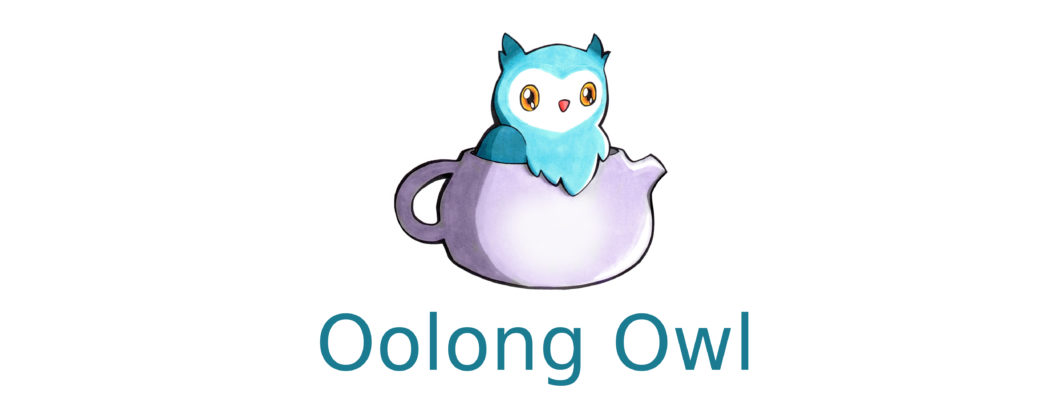Healthy-Leaf has an excellent aged white tea selection. I previously reviewed their 2009 Bask in the Sun, which was awesome. They have 2017 through to 2008 aged white teas. Today we will be drinking a 2015, 2011, and a 2008 Old White Tea. All three white teas are Lao Bai Chas. Not much information on each besides year and the 2015 white is organic and wild. The price range of 2011 and 2015 is close, with the 2008 tea as a big jump.
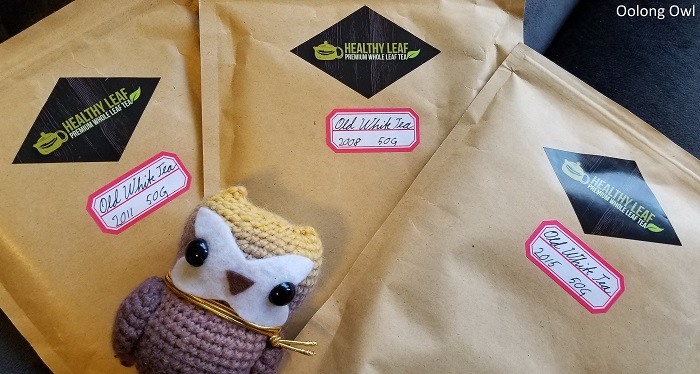
Leaf and Steeping Method
Left = 2015, Middle = 2011, Right = 2008.
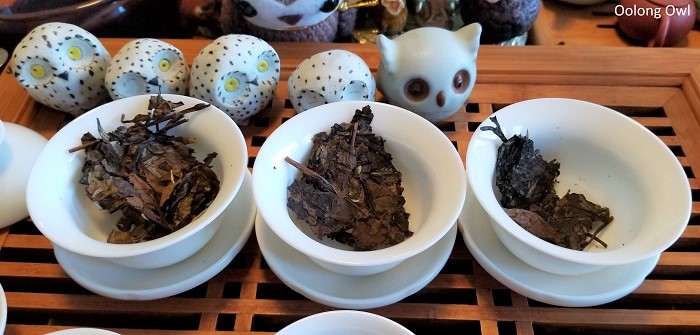
The 2015 and 2011 look pretty close in appearance whereas the 2008 is tightly compressed that it has almost melded into one solid substance.
To brew these three teas up, I used boiling water, 1 gram of leaf to 20ml of vessel size, and fast gongfu cha steeps. After a rinse, the leaves all have a distinctly different scent. The 2015 smells like sweetly honeyed coconuts. The 2011 has a dark, sour, and woodsy smell. As expected, the 2008 had an old library scent, but also with a touch of dank. Strangely, the 2011 white is the lightest looking of the bunch.
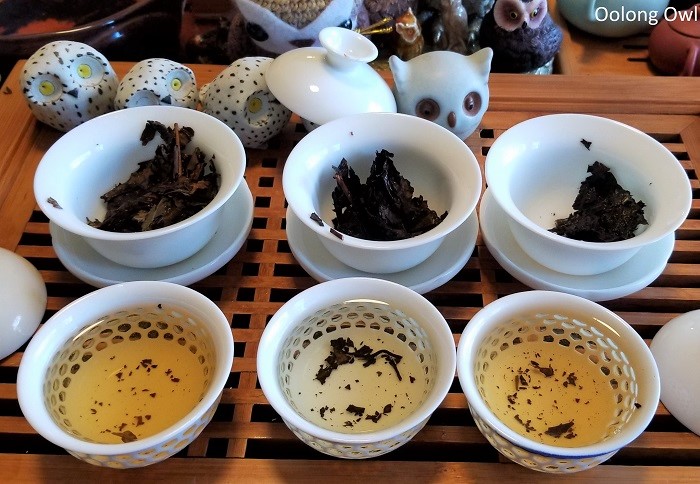
Comparison of Aged White Teas from Healthy-Leaf
First, Second, and Third Infusion:

2015 Lao Bai Cha is sweet, bright, young coconut, cream, with a bright amber finish. The mouthfeel is super thick and cottony. As the steep goes on, this tea shifts sweeter and more honey like. I am impressed with how good this tea is.
2011 Lao Bai Cha tastes of funky storage as it has a paperback book and insides of old kitchen cupboard taste to it. Other than old, the 2011 has some woodsy elements going on. It looks light but has just as much flavor as the rest. As I sip, I get a sour smell off the tea.
2008 Lao Bai Cha tastes like a final steeping of a dian hong black tea. It is woodsy, sweet, minerally, decomposed forest leaves, and back of a stuffy library smells.
Fourth, Fifth, Sixth, and Seventh Infusion:
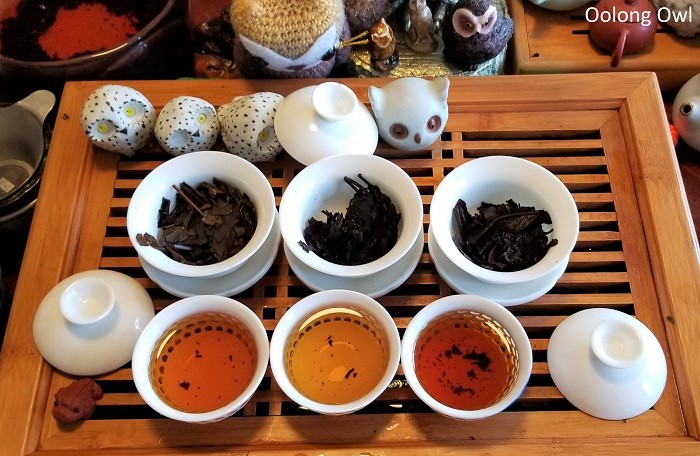
2015 Lao Bai Cha – This tea is pleasantly sweet still with a birch wood and honey sappy taste. 2015 Lao Bai Cha by far the sweetest of the bunch and I can’t get enough of it. It is total crack of how sweet and woodsy it is, this is what I like in an aged white with a couple years on it.
2011 Lao Bai Cha has kicked the storage back of a cupboard taste. It is also on the sweet side, little honey, mossy and petrichor, with a thick creamy body. It is strangely a little green tasting due to the mossy Pacific North West petrichor notes.
2008 Lao Bai Cha also lost some of the storage taste going sweeter as it leans burnt caramel, roasted acorns, and damp driftwood. This tea is strangely still compressed and dry, so it still has plenty of room to open up.
What I find interesting is drinking all these teas without a palette reset, the older teas (mostly the 2011) taste medicinal, funky, or sour, whereas the 2015 is so clean and sweet without storage aspects. With a palette reset, the 2008 shines the most as it is an elegant mix of complex, sharp, and sweet.
Eighth, Ninth, and Tenth Infusion:

2015 Lao Bai Cha interestingly has a bit of an aged taste finally showing. It is slightly medicinal, but more so just tastes like blown out birch and sap. 2015 Lao Bai Cha lost the sweetness and died off in flavor quickly. I go 8 infusions, then 9th was dead flavorless and astringent.
2011 Lao Bai Cha has shifted to be very sweet all of a sudden. It is sweet, delicate, mossy, woodsy, and a little medicinal tasting. I got 10 steeps, then it has no flavor I could milk out.
2008 Lao Bai Cha, hoot damn, what happened? This tea is good. It is super smooth, again tasting closer to a black tea, but bright and sweet like a white tea. It is acorny, woodsy, and starting to have date notes.
Tenth, Eleventh, Twelfth, and Thirteenth Infusion:
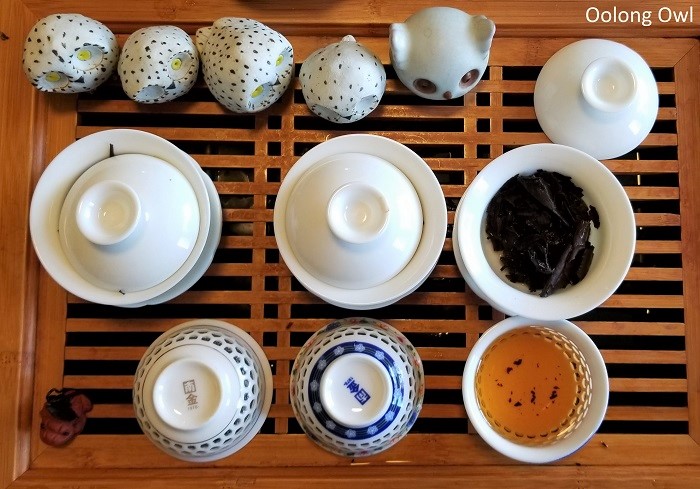
2008 Lao Bai Cha, why won’t you die! It is woodsy, sappy, bit medicinal sweet, date sweet, bit basement on some sips now that I can pay attention to 1 tea. It keeps putting out the flavor, but I can’t steep it hot enough in this tiny gaiwan to get it all out. I got 13 infusions before I gave up on my gaiwan, but I can smell this tea has another infusion or two left.
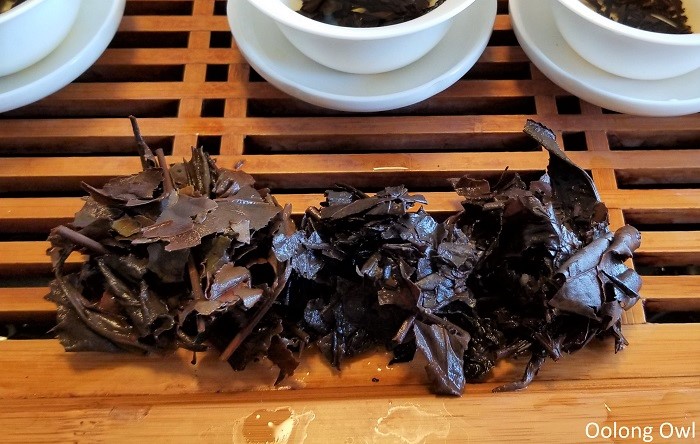
Comments
The 2015 Lao Bai Cha is perfect to drink now as it has an absolutely fantastic flavor. You can very well age this one and have awesome material to start with. It is the same price as the 2011, but you are paying for the organic and good material. When I do these comparisons, often I dump a lot of tea so I can get through it faster, but I drank every drop of this tea. The sweetness of this tea would attract many tea drinkers as it is an easy tea to drink. This younger Lao Bai Cha is certainly past a fresh white tea taste as it lacks the fresh floral or straw hay notes.
2011 Lao Bai Cha I found a little awkward. Starting off it was the one I disliked the most, it has a mossy and strong funky storage quality to it. It shined after the 2015 died and it just kept going and being sweet. Maybe this one needs a touch of time to fix the storage to drink now, but as is it is a good buy to get a head start to age as it has years on it and already has some medicinal notes.
2008 Lao Bai Cha is a drink me now and is an excellent aged white tea. It is aged well into this smooth, date, woodsy, medicinal tea. I can see aged puer drinkers would dig this tea, but otherwise, it is an aged white enthusiast type of tea. It is pricey, but it is a legit 10 year old white tea that you can enjoy the aged taste.
As a side note, I felt the way I steeped the 2011 and 2008 older teas not optimally. Both teas needed heat and retention, not tiny thin gaiwans. These would benefit from a clay pot and get way more infusions. If you are looking for a white tea to boil on the stove, the 2008 Lao Bai Cha would be boss. 2015 is not a stove boiler as it got astringent at the end.
(teas selected by Oolong Owl, but provided for review)





